One of the most important things you can do for young tomato transplants is to give them the right amount of water they need. In fact, proper watering can make the difference between healthy, strong tomato plants and those that struggle all season long.
Tomato plants are one of the most popular garden crops for home gardeners – from those who own acres of space to those with only tiny backyard patios. Not only can they grow amazingly well in traditional garden spaces, but tomatoes also flourish in raised beds, grow bags, containers, or even 5-gallon buckets.
With hundreds of different varieties available, it’s fun to experiment and plant multiple types each spring. But in order for those transplants to establish quickly and develop healthy roots, strong stems, and thick, lush foliage, they need proper watering – especially as they first develop!
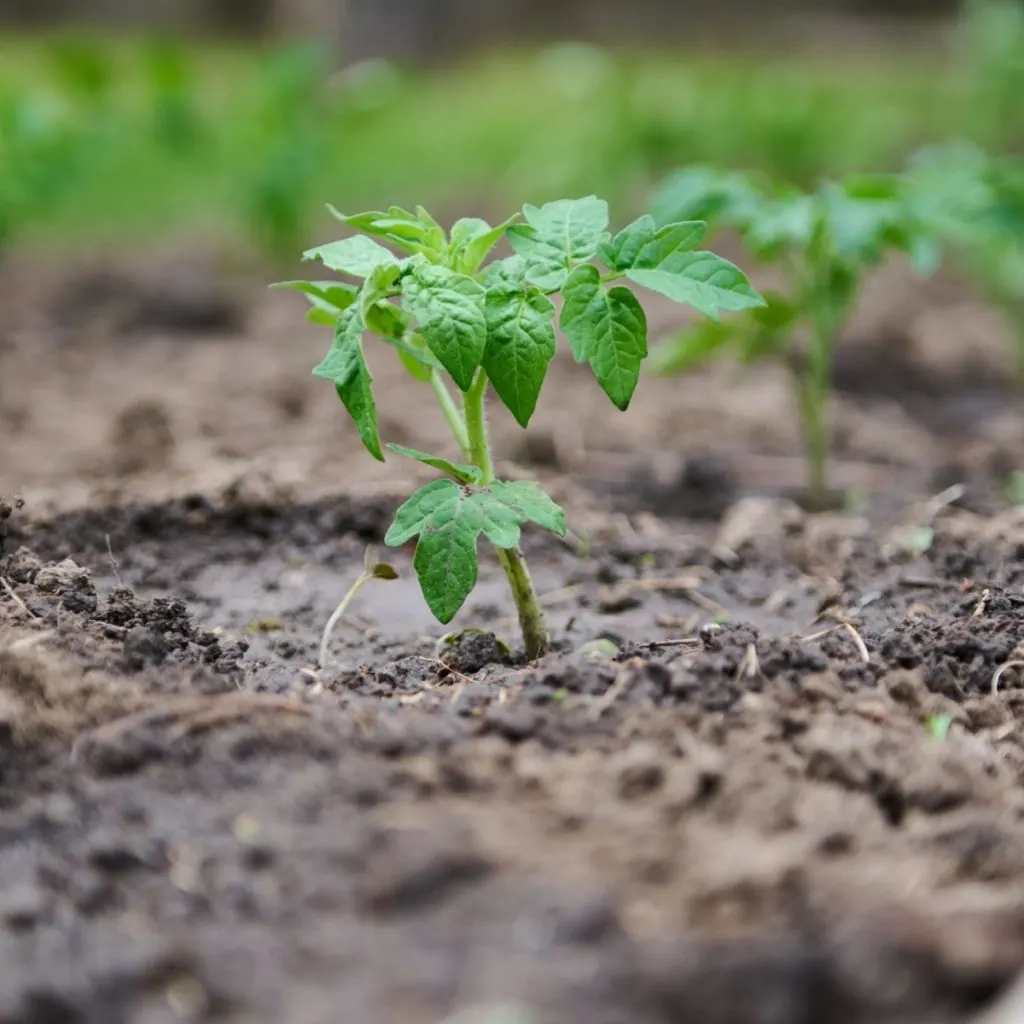
Without the right amount of moisture in the soil, tomato plants struggle to absorb energy from the sun as well as nutrients from the soil. This causes a delay in development during those first few weeks after planting.
This delay will unfortunately likely result in a less than stellar harvest throughout the entire summer. To prevent that, let’s find out what you can do to properly water your tomato transplants during those first couple weeks after planting.
Why Proper Watering Is Important
You probably know that tomato plants require plenty of water in order to survive. But you might not realize just how big of an impact moisture has on the health and productivity of your plants – especially for young tomato transplants.
To start with, proper watering creates strong, healthy root systems. These roots help to anchor and support tomato plants all throughout the growing season.
Since tomato plants can easily grow to be well over 6 feet tall, they need a strong support system to keep them from toppling over. Strong roots allow the plants to withstand all different types of weather elements like strong winds and rain.
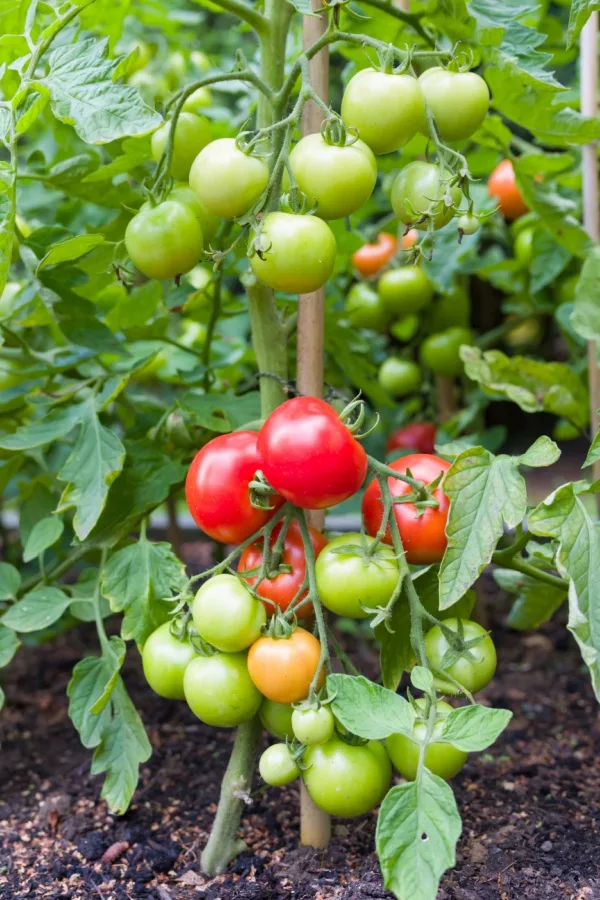
But having plenty of strong roots also allows the plants to absorb all the nutrients and moisture needed from the soil. Without moisture, the roots will start to shrivel and dry up, causing a reduction in the amount of water – and thus nutrients – that are drawn up through the plant’s roots and stems.
Plants need those nutrients to produce a full canopy of healthy foliage. It’s because of this foliage that the plants are able to turn the sun’s rays into energy through photosynthesis. Energy that equals the production of blooms and eventually tomatoes.
When it comes to proper moisture though, it’s just as important to avoid overwatering as it is underwatering. This is especially key with new transplants that are just starting to get used to being planted in new locations.
Tips On Watering Tomato Transplants Properly
Planting Properly
Before you even put a drop of water onto your tomato transplants, you want to get them off to a great start by planting them properly. The three keys to doing this are amending the soil, planting deeply, and mulching.
After you have a planting site decided upon, amend the soil with plenty of organic matter. Add in several inches of compost to help create loose, well-draining soil while providing tomato transplants with plenty of nutrients at the time of planting.
Next, plant tomatoes deeply. Tomato plants are capable of producing roots all along the length of their stems. In fact, plan on burying around ¾ of the transplants at the time of planting. It might seem excessive, but planting them that deep will be a huge key to having strong and healthy plants.
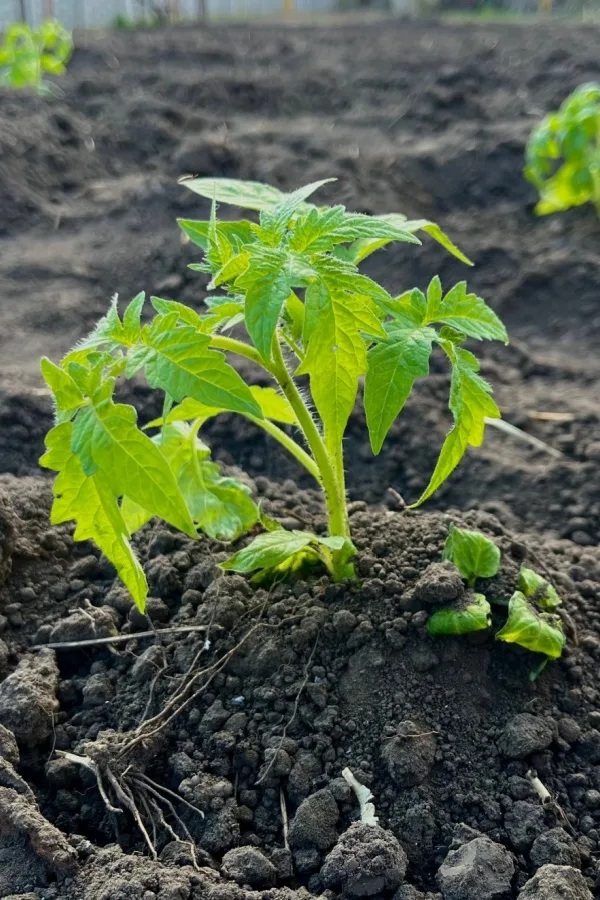
Lastly, add a good 5 to 6 inches of organic mulch around the tomato transplants immediately after planting. Not only will the mulch help to snuff out competing weeds, but it also works wonders for maintaining soil temperatures as well as moisture levels.
This means that every time you go to water your new tomato transplants, that moisture will stay deep in the soil as opposed to getting immediately evaporated by the hot summer sun. Use materials like grass clippings, straw, or shredded leaves.
Watering Frequency
Many people think you need to water new tomato transplants every day. However, this can often leave plants overly saturated and waterlogged. Overwatering tends to cause way more issues than underwatering.
During the late spring and early summer days, the temperatures are usually cooler than in the middle of the summer. It’s not uncommon for the temperatures to drop well into the 60s and 50s during the nighttime. The cooler temps tend to hold in moisture better than during hot spells.
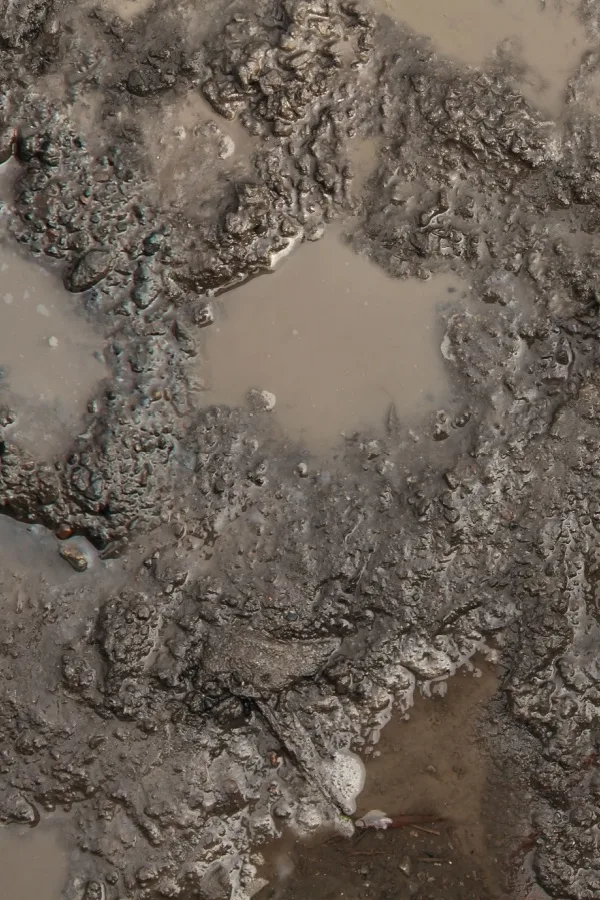
In addition, spring typically brings along lots of rain showers. All that rain means that the soil doesn’t get a chance to fully dry out in those first several weeks after planting tomatoes.
Waterlogged roots have just as much problems absorbing nutrients and bringing them all throughout the plant as roots that are lacking in moisture. So to combat this early on, avoid watering tomatoes daily unless you are experiencing excessive heat or drought-like conditions.
When To Water Tomato Transplants
Only water your tomato transplants when the soil has started to dry out near the plant’s roots. Don’t just go off of the look and feel of the soil at the surface level. The surface may look dry and cracked while just a few inches down is still fully saturated. Instead, feel down several inches because this is where the moisture levels really matter.
Newly planted tomato transplants that are just one to two weeks past planting will have shallower root systems. Check the moisture levels about 2 to 4 inches below for these newly planted tomatoes. See, “The Best Way To Know When To Water Tomato Plants”
For older transplants, check further down about 4 to 6 inches below the soil line. Use an inexpensive moisture meter instead of your fingers to be 100% certain. Product Link: XLUX Soil Moisture Meter
Watering Deeply
In addition to checking the moisture levels before watering tomato transplants, it’s also important to water transplants in the correct amounts.
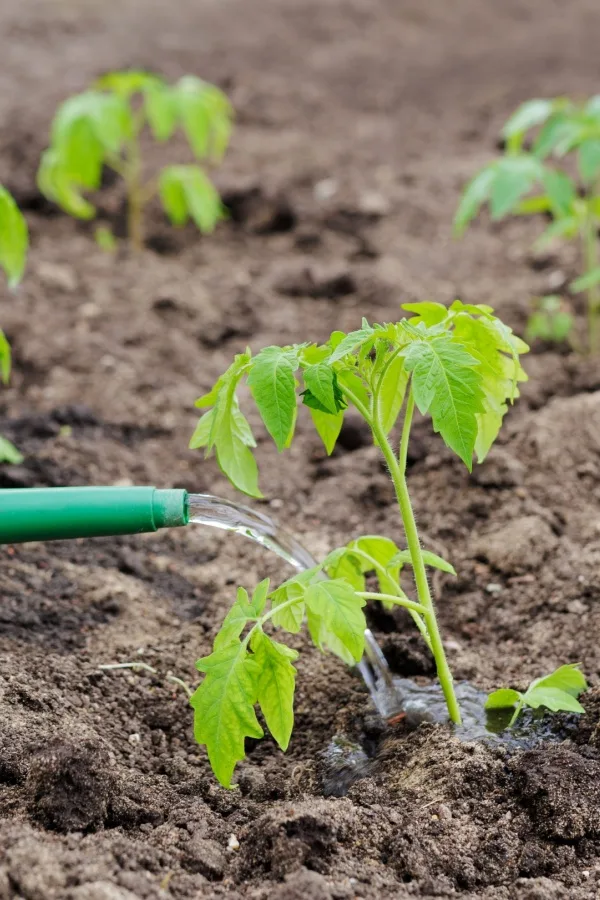
Water newly planted tomato transplants lightly in the first one to two weeks. At this point, their root system is not yet developed so they need small amounts of water but more frequently. The goal is to get the plants established without them having to put much effort into finding their water sources.
For this reason, aim to water young transplants every other day. However, for older tomato transplants, begin watering less frequently and more deeply.
When you give older plants just a quick spray of water, you are essentially only getting the first inch or two of soil wet. Sure this is perfect for newly planted tomatoes. But this causes the plants to grow shallow roots since that’s where the moisture is.
Older Tomato Transplants
For older transplants, the goal is to get the roots to grow down deep into the soil. Larger, deep roots will allow plants to find more nutrients to power plants. In addition, it provides a strong, sturdy foundation.
Aim to water older transplants about once or twice a week, but give them a good long soaking. This allows the moisture to reach deep into the ground and forces the roots to grow deep down as well in between waterings.
With these watering tips, you should be on your way to growing healthy and strong tomato transplants that have good root systems and eventually produce an amazing harvest!
I Grow Tomatoes
Follow Our Facebook Page For Even More Great Tomato Growing Tips! I Grow Tomatoes Facebook Page
I Grow Tomatoes is a website created for those who love all things about tomatoes – from planting and growing – to cooking and canning! We publish two articles every week, 52 weeks a year. Sign up today to follow via email! This article may contain affiliate links.
